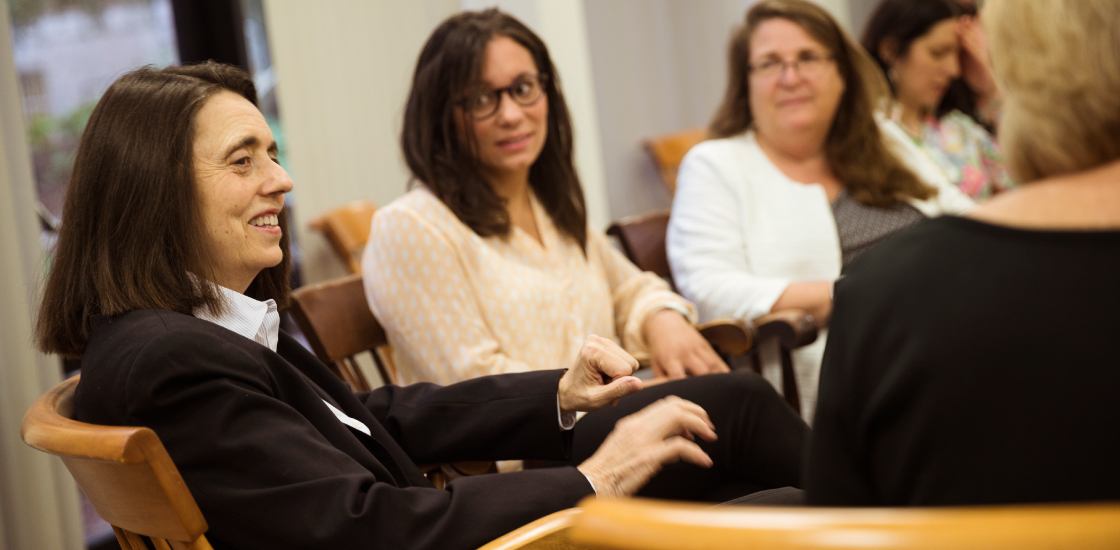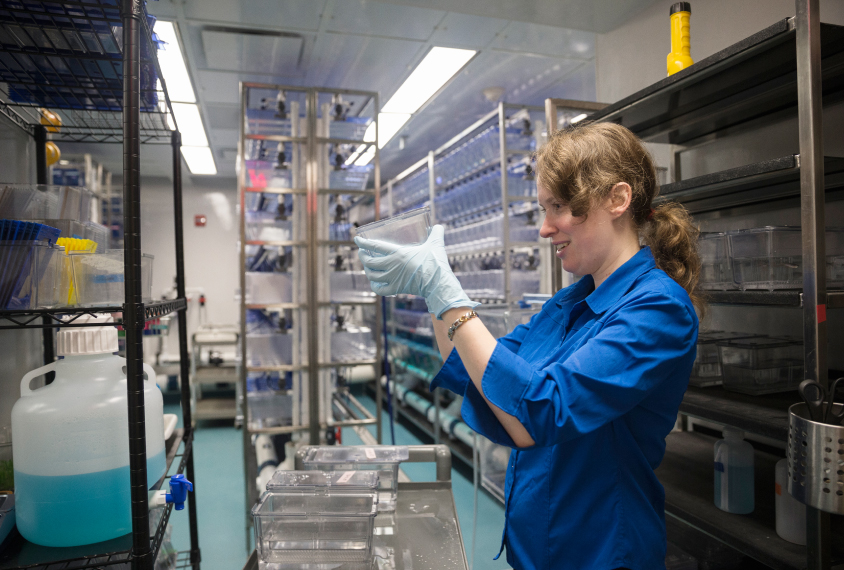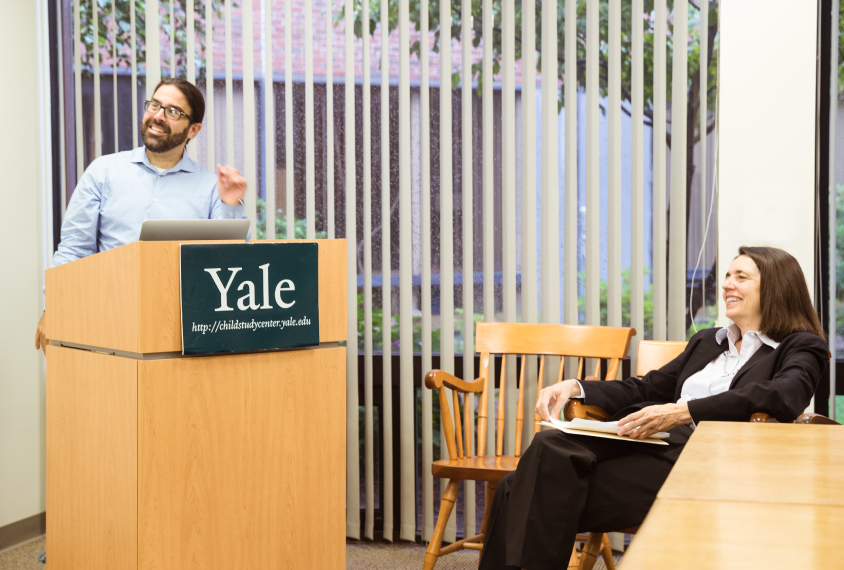High-profile exits take Yale’s autism center in new direction
Following the departure of several of its stars, the Yale Child Study Center is shifting focus to nurture young researchers.

When Kevin Pelphrey announced in February that he was leaving his post at the prestigious Yale Child Study Center, the news had the hint of an echo. His departure is the latest in a series of high-profile exits.
In the past ten years, Yale has lost four other stalwarts of autism research either to other universities — Robert Schultz in 2007, Ami Klin in 2011 and Matthew State in 2013 — or to retirement, as in the case of Fred Volkmar, who stepped down as the center’s head in 2014.
“The critical mass is stolen away” and dispersed at different institutes across the U.S, says Pelphrey, who left to head a new autism center at George Washington University in Virginia. “I think [Yale] will rebuild,” he says. “It’s just a question of how the center will move into the next generation.”
Within Yale, hopes are riding high on the center’s new director, Linda Mayes. Since January, she has hired five faculty members and is looking for three more. She is particularly focused on supporting young researchers and helping them find both mentors and funding — something that may have garnered less attention when the big stars dominated the center’s hallways.
“All the people who have been recruited away have fantastic charisma, they’re such good leaders,” says Fred Shic, who until this month was an assistant professor at the center. “But can you imagine all of them at the same place, leading?”
Growing up:
One new hire is Ellen Hoffman, a former graduate student in State’s lab, who stayed on at Yale even after State moved his team to the University of California, San Francisco.
In a way, Hoffman is emblematic of the center’s unique nature. Few researchers join the faculty of the institution where they completed their training. But at the 105-year-old Yale Child Study Center, this is the rule rather than the exception.
Schultz, Klin, State and Volkmar all arrived at Yale either as students or postdoctoral fellows and rose through the ranks.
“The child study center was much more than just an institution for us,” says Klin, who started at the center in 1989 as a postdoctoral fellow and was director of the autism program by the time he left. “For me in particular, it was the place that I grew up as a professional,” he says. “It was my only adult job.”

This pattern is also true of many of the autism researchers who are still at Yale, including Katarzyna Chawarska, James McPartland and Flora Vaccarino.
Shic also arrived as a graduate student at Yale in 2002, but on Friday he set out on an “adventure” — a new stint as associate professor at the University of Washington in Seattle. “You really can’t stay in the place you grew up forever,” he says.
Most of the other researchers who left Yale were on the path to big leadership positions, Shic says. “I think these are the type of people who have to leave no matter what: They’re going to start their own center.”
Leaving home:
Klin, who left to launch the Marcus Autism Center at Emory University, says he spent nearly a year deciding whether to accept the offer. In the end, the opportunity to lead a new institute in a region underserved for autism trumped institutional loyalty.
Pelphrey’s move to lead the Autism and Neurodevelopmental Disorders Institute at George Washington University was similarly motivated. The new institute’s focus is also autism specifically rather than developmental conditions generally as at Yale.
“Yale really strives to be world leader for everything, and can be,” Pelphrey says. “I want to study autism: I’m interested in basic brain development, but only because it’s relevant for autism.”
Klin and Pelphrey’s new institutes are both funded by large private endowments they can use to recruit researchers and fund projects. Researchers at Yale, by contrast, still rely primarily on research grants.
“The idea that you have to continually be bringing in new grants to maintain your lab is a style that not everyone wants to do forever,” says McPartland, who heads a multisite project looking for brain signatures of autism. “It’s really uncomfortable and really stressful, but it also really inspires you to be cutting-edge and be ambitious.”
Powerful pipeline:
The competition for grants and resources can be particularly tough on young researchers. Although the scientists who left were all great mentors, their departures have created opportunities for junior researchers.
“The department was heavily weighted towards full professors,” says Thomas Fernandez, an assistant professor at the center. “There was an urgent need to get younger faculty into the center and along a good trajectory to keep the child study center vibrant.”

Fernandez and others are particularly excited about Mayes’ interest in nurturing junior faculty. She has, for example, set up a mentorship program to pair young researchers with senior researchers from other departments, in order to foster collaboration across disciplines. She is also setting aside department funds to help junior researchers generate the data they need to apply for federal grants.
On the scientific front, she is championing a recommendation by the National Institute of Mental Health to look at features than span a range of developmental conditions, rather than at each condition in isolation. “We’re the department who thinks about how the brain develops and how children’s brains develop,” she says.
Abha Gupta is an assistant professor who worked closely with several of the researchers who left. She could have followed them but decided to stay at Yale.
“What has kept me here, despite these high-profile departures, is that there are still lot of great people here doing wonderful things,” Gupta says. “There is a vibe of the up and coming, and I’m so proud to be part of that up and coming.”
Recommended reading

Documenting decades of autism prevalence; and more

Expediting clinical trials for profound autism: Q&A with Matthew State
Explore more from The Transmitter

‘Perturb and record’ optogenetics probe aims precision spotlight at brain structures


